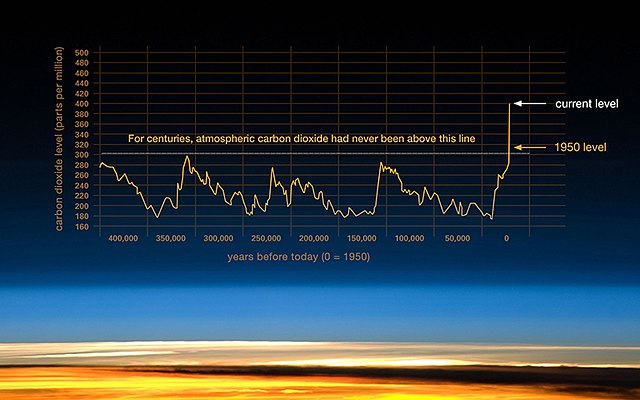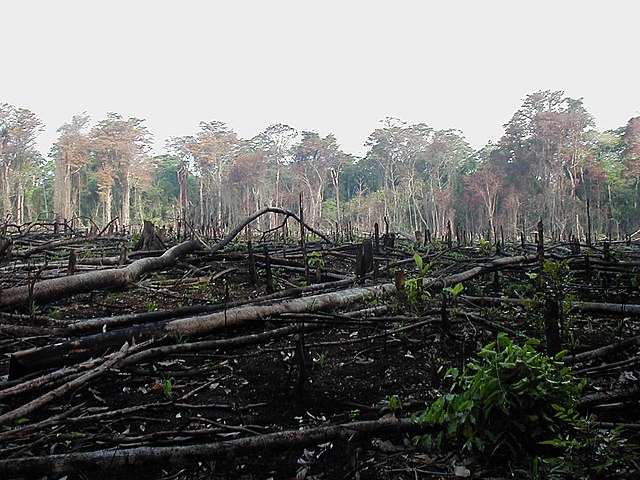Environmental issues are disruptions in the usual function of ecosystems. Further, these issues can be caused by humans or they can be natural. These issues are considered serious when the ecosystem cannot recover in the present situation, and catastrophic if the ecosystem is projected to certainly collapse.
Water pollution is an environmental issue that affects many water bodies. This photograph shows foam on the New River as it enters the United States from Mexico.
Eighty-plus years after the abandonment of Wallaroo Mines (Kadina, South Australia), mosses remain the only vegetation at some spots of the site's grounds.
Hambach Forest protest against coal mine expansion
Levels of air pollution rose during the Industrial Revolution, sparking the first modern environmental laws to be passed in the mid-19th century.
Human impact on the environment
Human impact on the environment refers to changes to biophysical environments and to ecosystems, biodiversity, and natural resources caused directly or indirectly by humans. Modifying the environment to fit the needs of society is causing severe effects including global warming, environmental degradation, mass extinction and biodiversity loss, ecological crisis, and ecological collapse. Some human activities that cause damage to the environment on a global scale include population growth, neoliberal economic policies and rapid economic growth, overconsumption, overexploitation, pollution, and deforestation. Some of the problems, including global warming and biodiversity loss, have been proposed as representing catastrophic risks to the survival of the human species.
Chart published by NASA depicting CO2 levels from the past 400,000 years.
Lacanja burn
Fishing down the foodweb
Urban sprawl in California








